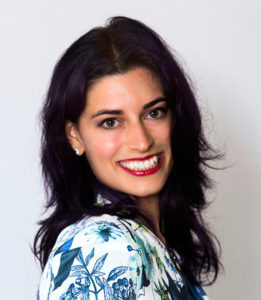
07 Feb Interpreting for Crimes Against Humanity: Giving Victims A Voice
On March 14, 2012, Thomas Lubanga Dyilo became the first person to be found guilty through a trial in the International Criminal Court (ICC). Among the war crimes this Congolese warlord oversaw were enlisting and conscripting children under the age of 15 years and using them to participate actively in hostilities (child soldiers). Luckily, the ICC was able to bring him to justice. However, the trial would not have been possible without interpreters.
World justice gets a home
Mr. Ahmed El Khamloussy has spent the last nine and a half years interpreting for the ICC. I had the honor of attending his lectures in November when he came to Glendon College to teach an intensive week-long workshop for my Master’s in Conference Interpreting program. During his visit, he spent some time relaying a sobering but inspiring account of what it means to interpret for crimes against humanity.
The ICC, located in The Hague, Netherlands, came into existence in 2002 through the Rome Statute. Its mission: Put an end to impunity. Its origin dates back to fifty years earlier when the United Nations formed and hosted the Nuremberg Trials to deal with criminals from World War II. (Incidentally, those trials gave rise to the first simultaneous conference interpreters. Until that time, simultaneous interpretation was not widely used in our profession.) Ever since, a permanent international court had been desired, and in 2002 that became a reality.
International tools for justice
The ICC prosecutes crimes of aggression, war crimes, crimes against humanity and genocide. (Don’t confuse it with the International Court of Justice, which settles disputes between nations but does not sentence and punish criminals. The ICC is also independent of the United Nations.) It is governed by The Rome Treaty. Any of the 124 treaty signatories can refer a case to the Court (you may be surprised to learn that the United States is not an active party to the treaty).
The Court uses a hybrid system of common law and civil law. This is important, because one country’s methods for prosecuting may be unheard of in another. (For example, in some countries, “conspiracy” is not a crime. How, then, can you punish someone for it?) The hybrid system permits a difficult balance between the two systems. It allows for judges and lawyers who use drastically different systems to find some common ground.
The languages of justice
One more challenge when interpreting at the ICC is the accents: There are close to 100 nationalities at the Court, and you can hear every type of speech imaginable. (And I thought that 15 or so nationalities in my old courthouse in New Jersey was a lot!)
The very nature of the ICC as an international body implies the need for interpretation in many different languages. The challenges can be unique, such as how to give proper service to a defendant in another language. The answer may seem simple—i.e., translate the 100-page document containing the charges (called an Indictment in other jurisdictions) into his/her language…except that sometimes, no written form exists for a particular language. This was the case for a Sudanese accused person speaking Zaghawa (a language spoken in Darfur, Sudan).
This, and many other challenges, has faced Mr. El Khamloussy and his colleagues. He has trained interpreters of languages he doesn’t even speak, creatively coming up with exercises and relying on their own motivation and peer feedback to improve. They, in turn, have become accredited interpreters, ensuring that standards of accuracy be upheld and that those who commit “the most serious crimes of concern to the international community as a whole” be brought to justice.
Every detail counts, even when it hurts
And, of course, Mr. El Khamloussy interprets. He does so in French and Arabic, with occasional retour into English. The interpretation is almost exclusively simultaneous, performed inside a booth. Just as we might expect, Mr. El Khamloussy interprets every hedge, every filler, and every detail of a witness’s testimony. However, he adopts conference interpreter norms when interpreting for the Court and the attorneys. There, his focus is on delivery, making the speeches sound natural and elegant, his ultimate goal to be faithful to the speaker’s intention. Hedges will be forgiven and backtracks will not be echoed, but still, no details may be lost. Every single word he utters is transcribed in real-time into the record by a court reporter.
To interpret at the ICC is to give voice to unspeakable tragedies. It is to witness the darkest our humanity can sink to. It is not easy. Mr. El Khamloussy, who was already an accomplished conference interpreter by the time he began his work in The Hague, speaks of becoming physically sick during his first month on the job—such was his appreciation for this work and his desire to do it well. “I sat down with colleagues, bought them coffee, and got as much advice as I could,” he says. “Also, I got a copy of the Rome Statute, and I tried to learn it by heart.”
Vicarious trauma as a reality
Before an ICC trial begins, the interpreters can request to meet with a psychologist who briefs everyone, interpreters included. There are voluntary groups and individual counseling sessions throughout the weeks and months that follow. Ultimately, however, Mr. El Khamloussy says that it is up to each person to figure out how best to interpret accurately while offsetting the possibilities of secondary trauma. “You have to leave your work at work,” he told us. He said some interpreters choose not to watch video evidence or to look at other graphic images. (This reminded me of when I interpreted for a horrendous child abuse case and chose not to look at the photos marked into evidence. It was simply too painful for me to look, and I needed emotional distance in order to interpret accurately.) He does watch the videos, however. “I need it,” he said, “to remind me of my own humanity.”
After almost a decade at this job, we wondered, was he there for good? “You never know where life will take you,” says Mr. El Khamloussy, “but I love what I do. Despite the challenges and sadness, I hope that I am doing good for the world. I am giving a voice to people who desperately need it.”
Photo by Mikael Kristenson on Unsplash
 Athena Matilsky fell in love with Spanish the year she turned 16. She chose it as her major at Rutgers University and selected a focus in translation and interpreting. After graduation, she taught elementary school in Honduras and then returned home to begin freelancing as a medical and court interpreter. She has since achieved certifications as a Healthcare Interpreter and a Federal Court Interpreter. She was the recent editor-in-chief of Proteus. Currently, she works as a freelance interpreter/translator and trains candidates privately for the state and federal interpreting exams. When she is not writing or interpreting, you may find her practicing acroyoga or studying French. Website: https://athenaskyinterpreting.wordpress.com/
Athena Matilsky fell in love with Spanish the year she turned 16. She chose it as her major at Rutgers University and selected a focus in translation and interpreting. After graduation, she taught elementary school in Honduras and then returned home to begin freelancing as a medical and court interpreter. She has since achieved certifications as a Healthcare Interpreter and a Federal Court Interpreter. She was the recent editor-in-chief of Proteus. Currently, she works as a freelance interpreter/translator and trains candidates privately for the state and federal interpreting exams. When she is not writing or interpreting, you may find her practicing acroyoga or studying French. Website: https://athenaskyinterpreting.wordpress.com/

Interpreting for clients who experienced traumatic events can have quite an impact on the interpreter.
An interpreter who is able to overcome his own emotions while shadowing the client’s feelings, interpreting simultaneously and making sure nothing is lost in translation is the perfect interpreter.
Kudos to Mr. El Khamloussy. We can say that he reached the height of interpretation.
Very nice of you to say, Claudia!
Beautiful article, Athena. Thank you!
Thank you, Athena, for your thoughtful and kinds words! It was great to meet you, and I am sure our paths will cross again!
Excellent! Athena, once again!
I’ve been around the interpretation industry for a while but this is something that I never even heard or imagined of (I’m in the entertainment business). Thank you for your dedication and commitment. Loved your story.